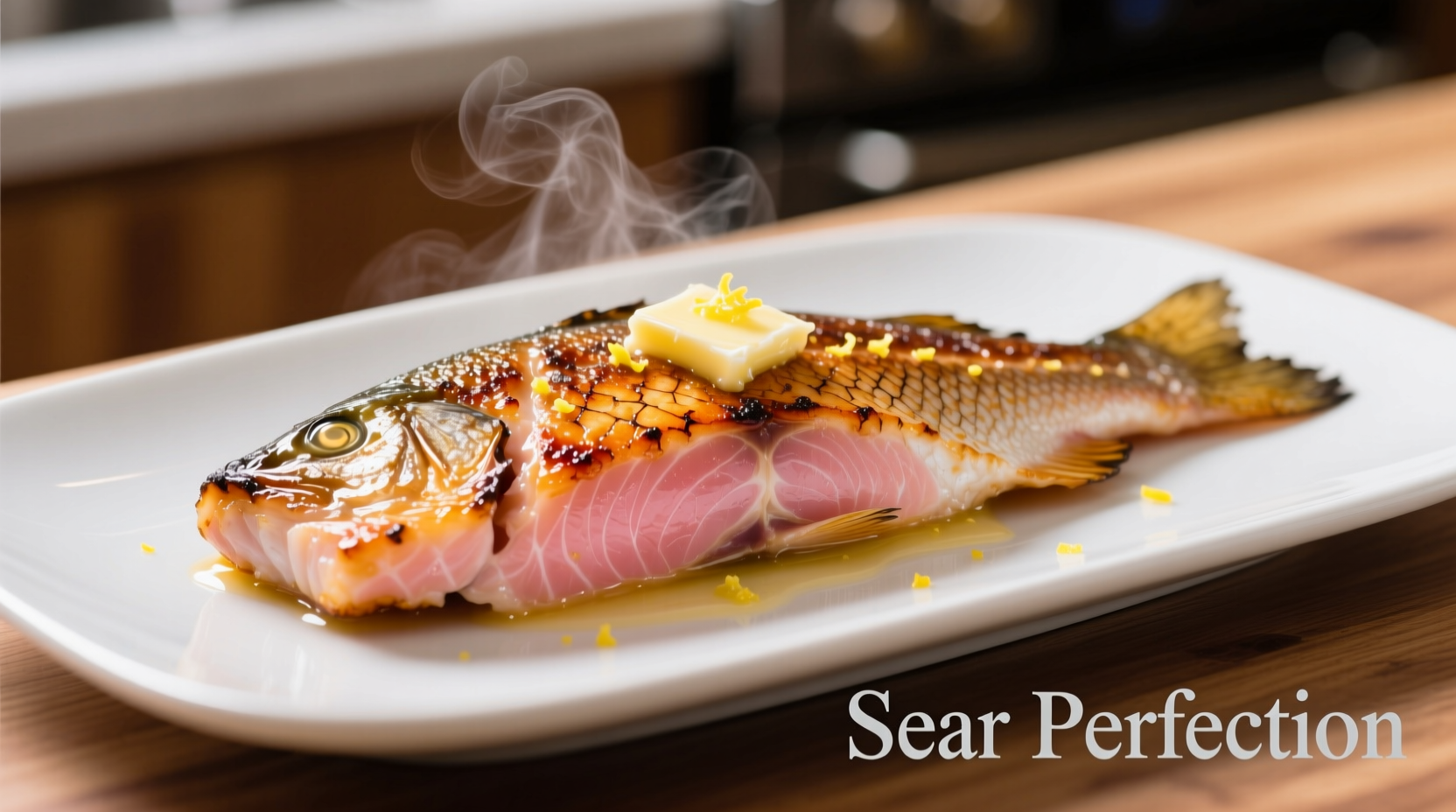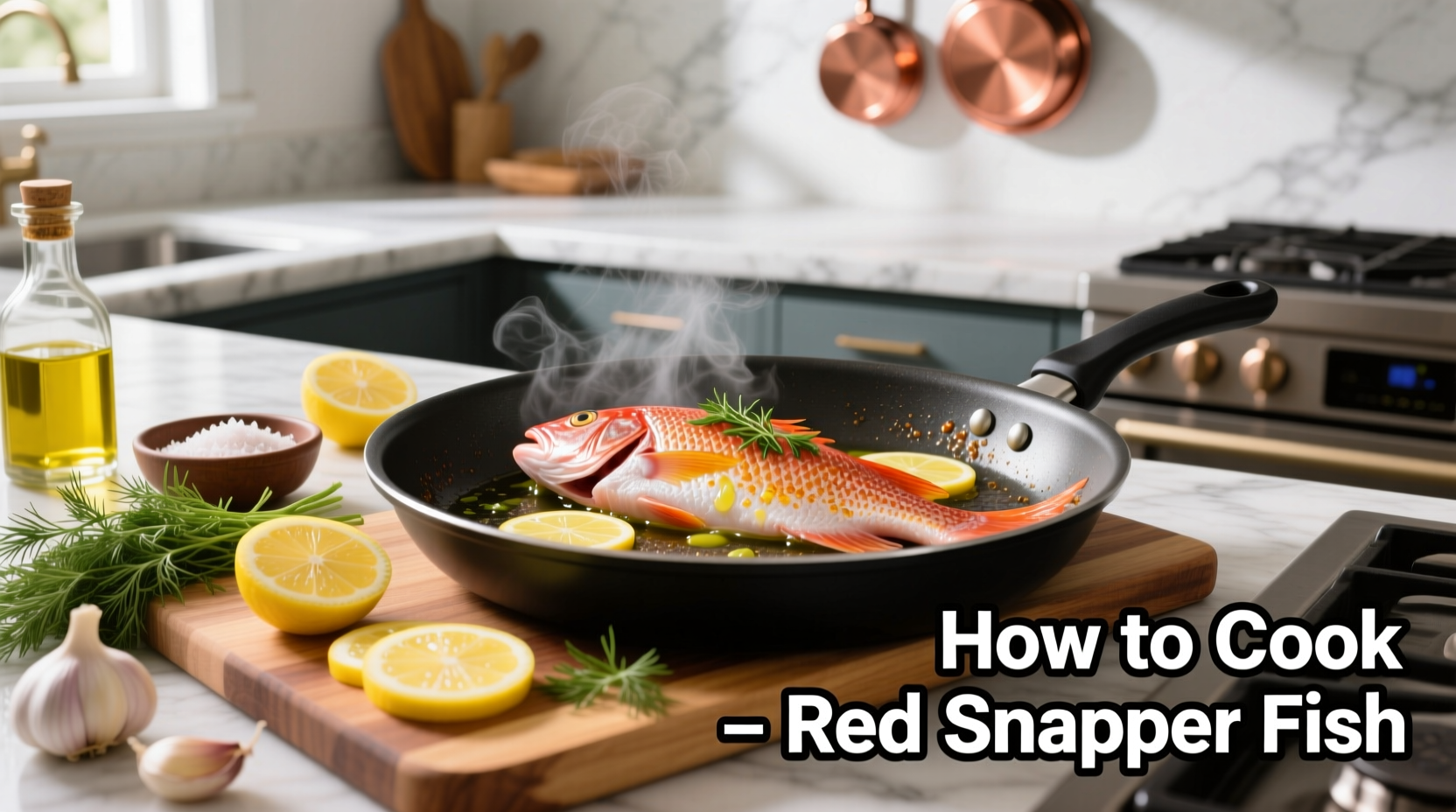The best way to cook red snapper fish is by pan-searing with high heat for 3-4 minutes per side until it reaches an internal temperature of 145°F (63°C), creating a crispy skin while keeping the flesh moist and flaky. This method works for both fillets and whole fish, with proper seasoning of salt, pepper, and lemon enhancing its delicate flavor without overpowering it.
Red snapper isn't just another fish option—it's a culinary gem that transforms weeknight dinners into restaurant-quality experiences. When prepared correctly, this lean, mild-flavored fish delivers perfect flakiness with a subtly sweet taste that pairs beautifully with citrus, herbs, and light sauces. Whether you're a beginner cook or seasoned home chef, mastering red snapper opens doors to countless healthy, impressive meals ready in under 20 minutes.
Why Red Snapper Deserves Your Attention
Among popular white fish varieties, red snapper stands out for its firm texture that holds up well to various cooking methods while maintaining moisture. Unlike more delicate fish like sole, red snapper won't fall apart during cooking, making it ideal for beginners. According to the U.S. Food and Drug Administration, red snapper is considered a "best choice" for regular consumption due to its moderate mercury levels compared to other predatory fish.
| Preparation Method | Cooking Time | Best For |
|---|---|---|
| Pan-searing | 6-8 minutes | Fillets with skin-on |
| Baking | 12-15 minutes | Whole fish or thick fillets |
| Grilling | 8-10 minutes | Fillets or steaks |
| Steaming | 10-12 minutes | Delicate preparations |
Essential Preparation Steps Before Cooking
Proper preparation makes the difference between good and exceptional red snapper. Start by examining your fish—fresh red snapper should have bright, clear eyes (if whole), firm flesh that springs back when pressed, and a clean ocean smell without any fishy odor. If using fillets, ensure the skin is intact and scales completely removed.
Before cooking, follow these critical steps:
- Dry thoroughly with paper towels—moisture is the enemy of crispy skin
- Season 15-20 minutes before cooking with salt to enhance flavor and texture
- Bring to room temperature for 15 minutes before cooking for even heat distribution
- Score the skin diagonally on thicker fillets to prevent curling

Step-by-Step Pan-Seared Red Snapper Recipe
Pan-searing delivers restaurant-quality results with minimal equipment. This method creates that coveted golden-brown crust while keeping the interior moist—a technique professional chefs rely on for its reliability and speed.
- Heat your pan—Use a heavy skillet (cast iron or stainless steel) over medium-high heat until a drop of water sizzles immediately
- Add fat—Use 1-2 tablespoons of high-smoke point oil (avocado or grapeseed) plus 1 tablespoon butter
- Place fish skin-side down—Gently lay fillets in the pan away from you to prevent oil splatter
- Press lightly with a fish spatula for 10 seconds to ensure full contact with the pan
- Cook undisturbed for 3-4 minutes until skin is golden and releases naturally from the pan
- Flip carefully and cook 2-3 minutes more until internal temperature reaches 145°F
- Rest 2 minutes before serving to allow juices to redistribute
The USDA Food Safety and Inspection Service emphasizes that properly cooked fish should flake easily with a fork while maintaining moisture. Overcooked red snapper becomes dry and loses its delicate texture, so using an instant-read thermometer is highly recommended for consistent results.
Avoid These Common Red Snapper Mistakes
Even experienced cooks make these preventable errors when preparing red snapper:
- Moving the fish too soon—Wait until it naturally releases from the pan before flipping
- Overcrowding the pan—Cook in batches if necessary to maintain proper temperature
- Using low heat—Insufficient heat prevents proper searing and causes sticking
- Skipping the resting period—Cutting immediately causes juices to escape
- Over-seasoning—Red snapper's delicate flavor gets overwhelmed by strong spices
Perfect Pairings for Your Red Snapper Dish
Complement red snapper's mild sweetness with these flavor combinations:
- Citrus accents—Lemon, lime, or orange slices added during the last minute of cooking
- Herb butter sauce—Melt butter with fresh parsley, thyme, and a squeeze of lemon
- Simple salsa—Combine diced mango, red onion, cilantro, and jalapeño
- Vegetable sides—Roasted asparagus, sautéed spinach, or grilled zucchini
For wine pairings, choose a crisp white like Sauvignon Blanc or unoaked Chardonnay that won't overpower the fish's delicate flavor. The American Heart Association recommends including fish like red snapper in your diet at least twice weekly for heart health benefits due to its omega-3 fatty acid content.
Storing Leftovers Properly
If you have leftovers (which is rare with this delicious fish!), store them properly:
- Refrigerate within 2 hours of cooking in an airtight container
- Consume within 2 days for best quality
- Reheat gently in a 275°F oven for 10-15 minutes—never microwave
- Do not freeze cooked red snapper as it becomes dry and rubbery
Remember that cooked fish continues to cook from residual heat, so remove it from the heat source just before it reaches your target temperature. This carryover cooking principle applies to all fish preparation methods and prevents the common mistake of overcooking.
Frequently Asked Questions
How do I know when red snapper is fully cooked?
Red snapper is fully cooked when it reaches an internal temperature of 145°F (63°C) at its thickest point and flakes easily with a fork while maintaining moisture. The flesh should change from translucent to opaque. Using an instant-read thermometer is the most reliable method, as visual cues alone can be misleading, especially with thicker cuts.
Should I leave the skin on when cooking red snapper?
Yes, leaving the skin on provides several benefits: it protects the delicate flesh during cooking, creates a delicious crispy texture when properly seared, and helps the fish hold its shape. For pan-searing, score the skin diagonally to prevent curling. If you prefer not to eat the skin, it will peel away easily after cooking due to the fat layer between skin and flesh.
What's the best oil for cooking red snapper?
Use oils with high smoke points (400°F or higher) like avocado oil, grapeseed oil, or refined olive oil. These withstand the high heat needed for proper searing without burning. Avoid extra virgin olive oil which has a low smoke point and can create bitter flavors. For finishing, you can add a small amount of butter during the last minute of cooking for enhanced flavor.
Can I bake red snapper instead of pan-searing?
Yes, baking works well for red snapper, especially for whole fish or thicker fillets. Preheat your oven to 400°F, place seasoned fish on a parchment-lined baking sheet, and cook for 12-15 minutes until it reaches 145°F internally. For extra crispiness, broil for the last 1-2 minutes. Baking is a hands-off method that produces moist results but won't create the same crispy skin as pan-searing.
How can I prevent red snapper from sticking to the pan?
Prevent sticking by ensuring your pan is properly preheated before adding oil, thoroughly drying the fish skin, and seasoning it well. Press the fish gently into the hot pan for 10 seconds after placing it in, then leave it undisturbed for the full cooking time. Don't attempt to move or flip the fish until it naturally releases from the pan surface, which indicates a proper sear has formed.











 浙公网安备
33010002000092号
浙公网安备
33010002000092号 浙B2-20120091-4
浙B2-20120091-4